#cylinder cone sphere
Photo
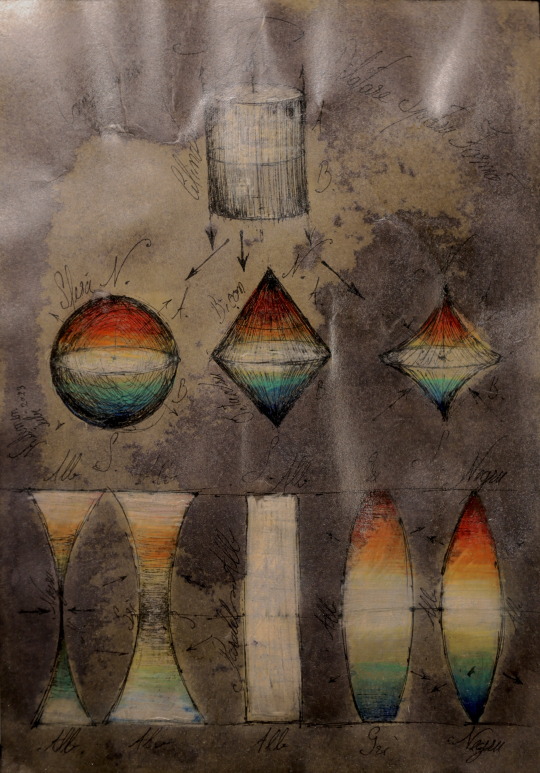
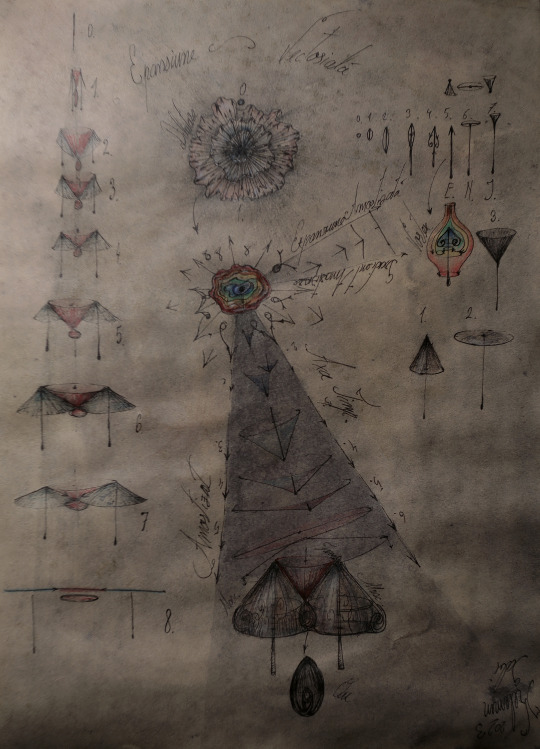
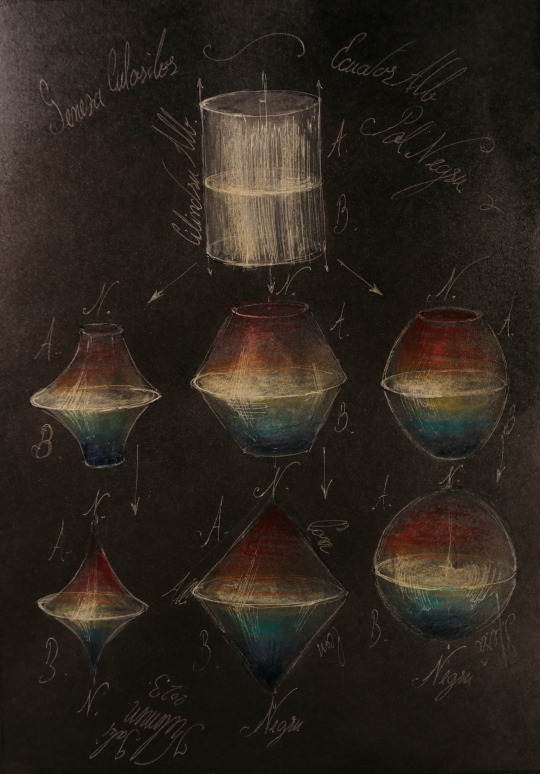
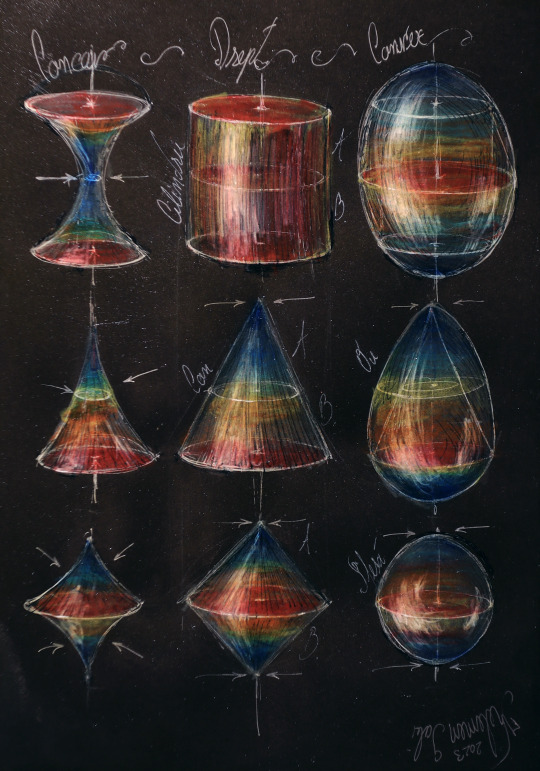
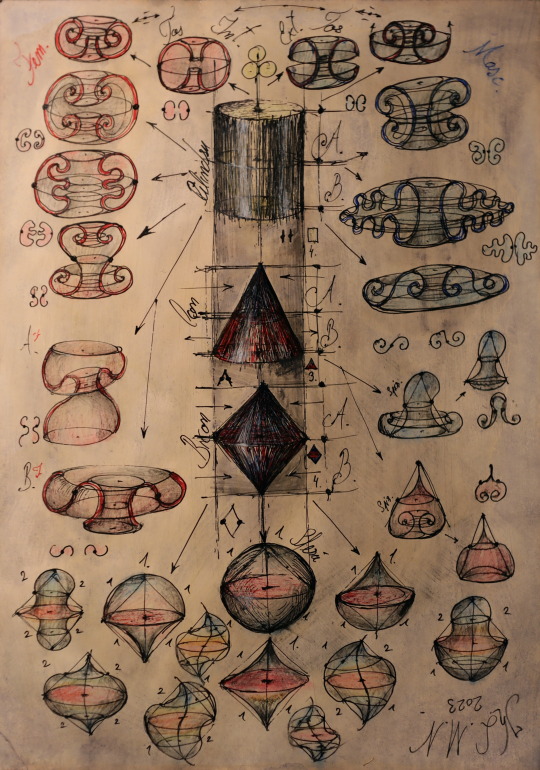
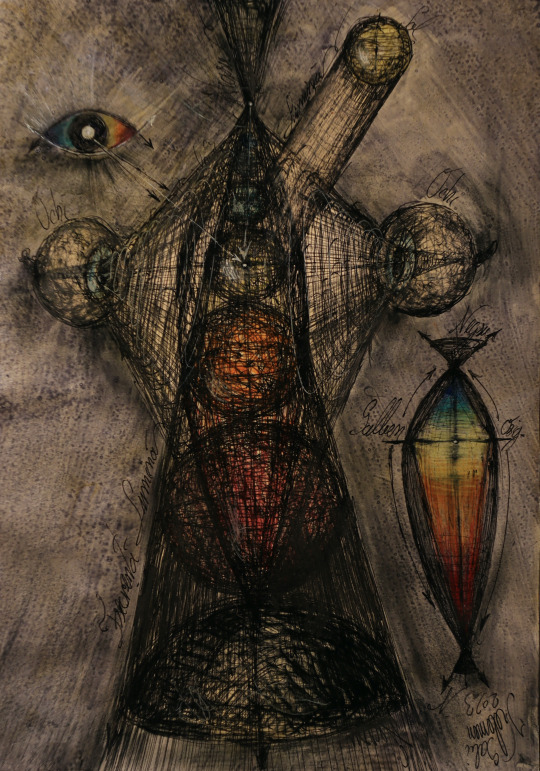
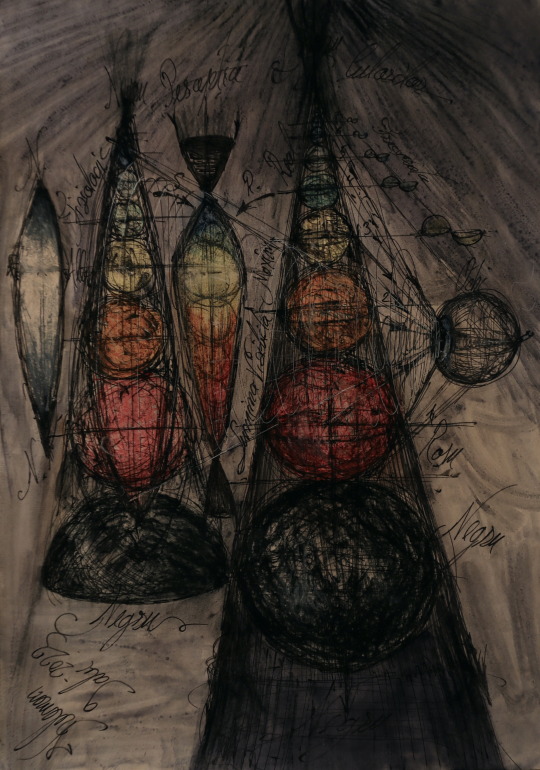

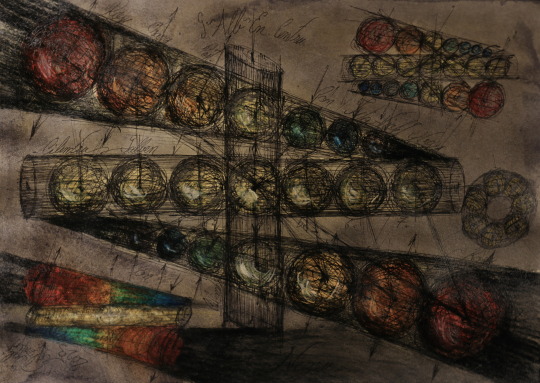
Color sphere cylinder cone KLMN
science of colour
#theory of color#Implosion explosion torus#color codes#cylinder cone sphere#gabriel kelemen#chromatology#science of colour#KLMN CODEX#Light bicone dark#secret
7 notes
·
View notes
Text
Does anyone know how to find missing volume of sphere cylinders and cones?
1 note
·
View note
Text
1K notes
·
View notes
Note
i'm loving seeing you post more of your art!! out of curiosity, how long have you been drawing? is there anything specific you do to practice or do you just pick something and draw it? (i've been trying to learn to draw myself for the past year or so, and seeing your art more often has become somewhat of an inspiration for me!)
ive been doodling all my life! thought when i say "doodle" i mean "as an unmedicated youth i was unable to focus on a drawing for more than 45 minutes at a time"
here's some posts from an art blog i had in middle school, and the first year of highschool.
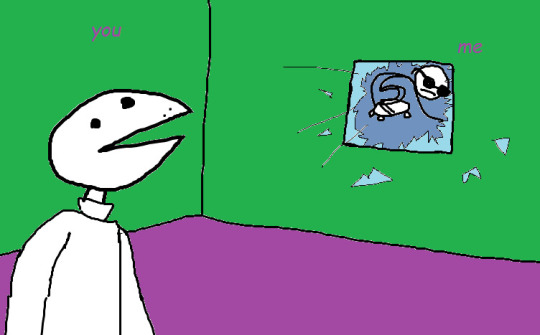
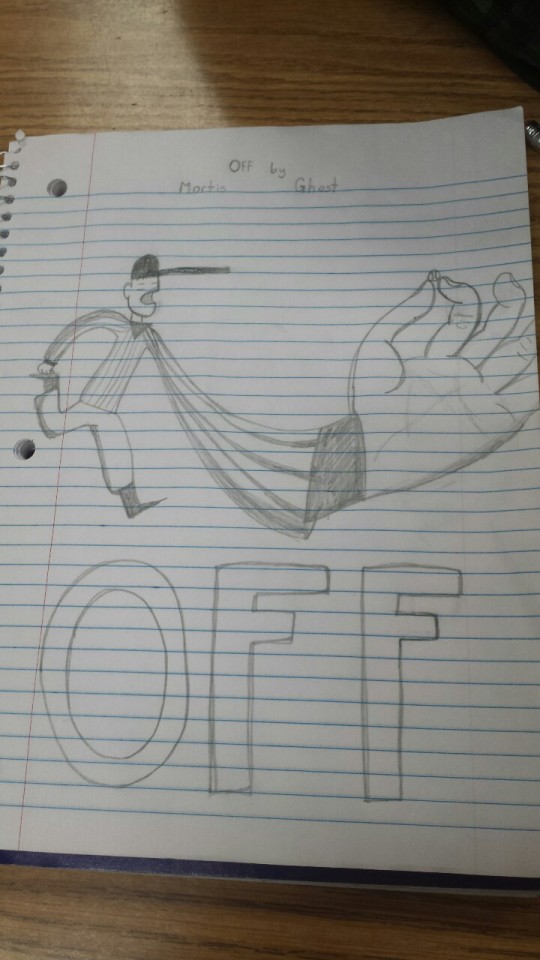
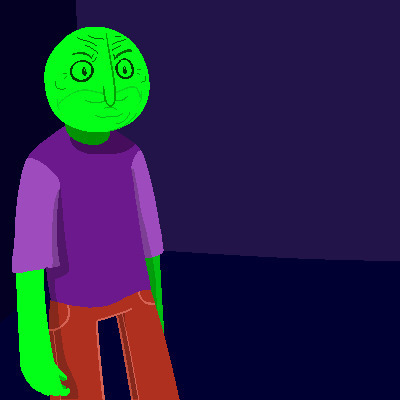
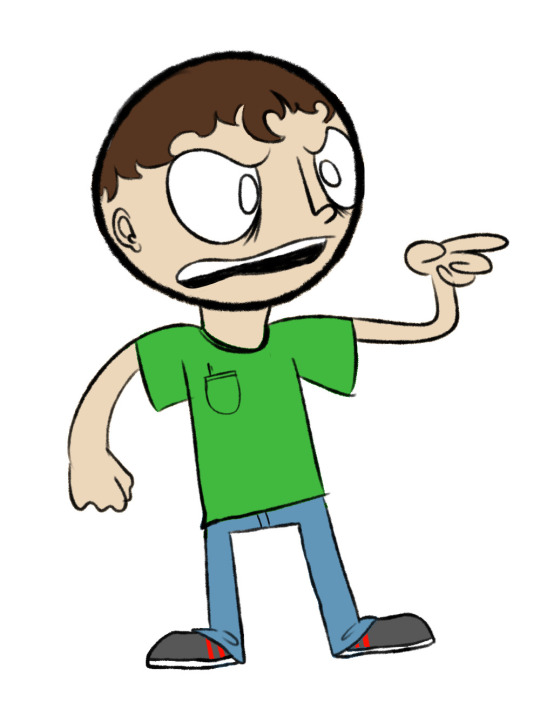
what most critically separates this art from the art ive been doing recently is that i NEVER used any refrence. ever. i looked at stuff to make sure i knew what it looked like, but the rest was always roughly estimated based on what i thought would look good (which was largely based on cartoons).
but i only ever started trying to "learn how to draw" over the past year. here's the thing: spending a bunch of hours practicing drawing cubes and cylinders is like. all you have to do to see yourself start improving in real time.
draw a bunch of cubes and cylinders, and learn how to make them look realistic in proportion to each other using references to guide you. practice drawing stuff like basic buildings, cans of soda, maybe a cake (3 short fat cylinders on top of each other) if you're feeling daring. then try to draw slightly more complicated shapes, like spheres and cones and stuff. layer these shapes on top of each other to make more complicated shapes. you're gettin the picture.
infuriatingly, basic shapes is like 40% of the "getting it to click" work done.
after than, move on to 30 second sketches of nude models using this site. yeah, only 30 seconds. it doesnt matter if it comes out looking like shit, the point is learning how to simplify complicated shapes down into their most basic lines. dont waste time erasing. dont waste time pressing ctrl-z. erasing is your enemy. you arent learning how to erase, you're learning how to draw. (you'll get your eraser back later).
do this hundreds of times. yeah, hundreds. put on a podcast or something. get in a voice call with your friends. but ya gotta practice this one. that's the next 20% of making it "click".
now, unfortunately, the last 40% is just a matter of slamming your head against the wall of art until things slowly start to look better and better. it's sort of like a chemical formula, in that the closer you get to 100% purity, the more and more difficult it becomes to distill it.
the key is to ALWAYS use reference. you cannot learn how to realistically draw something you've conjured from your mind if you cannot depict something that's right in front of you realistically.
im currently in this valley, as most artists are. in fact i dont think it's possible to make art "click" in your mind 100%, but it sure is fun to inch closer and closer!
below is a bunch of art in chronological order from april to now. you'll see that it's not really a straight road of getting better and better, but you'll see my lines slowly getting more confident and details becoming more clearly defined!
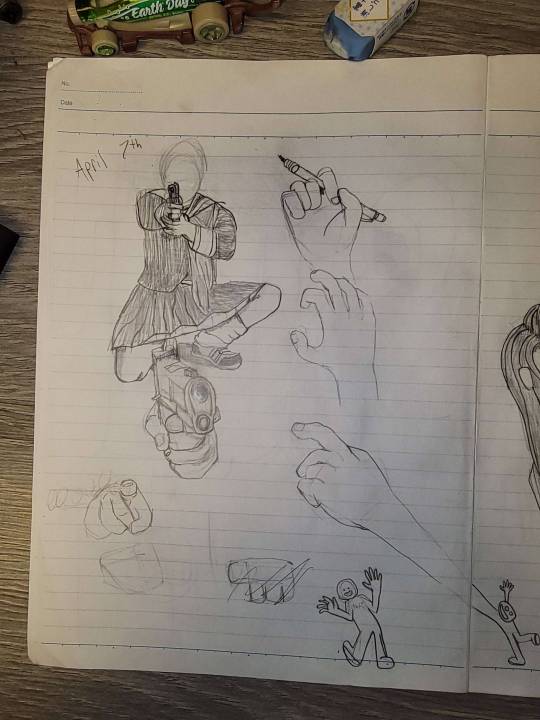
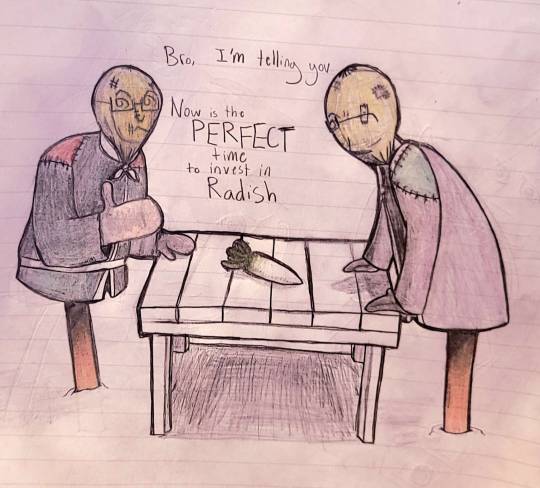
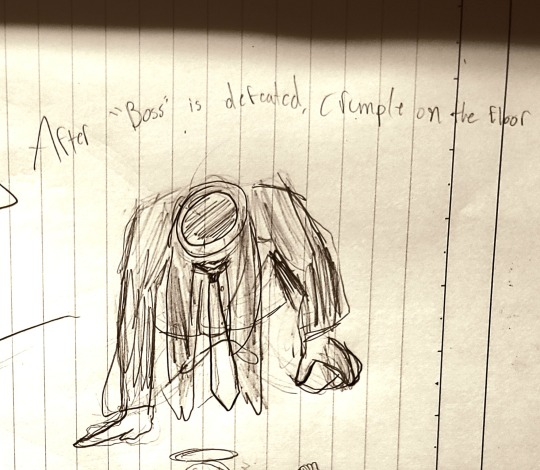
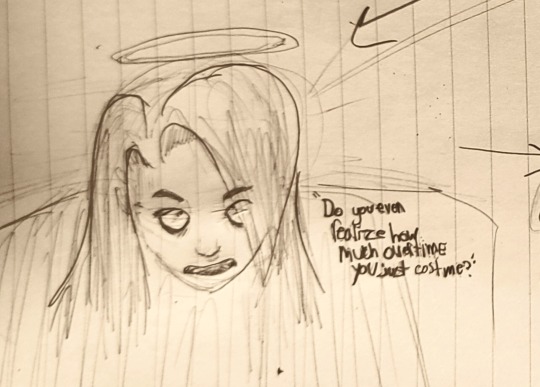

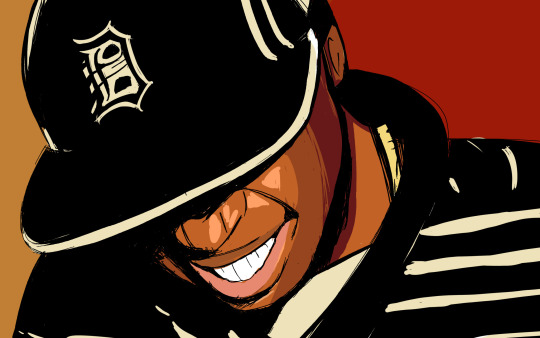
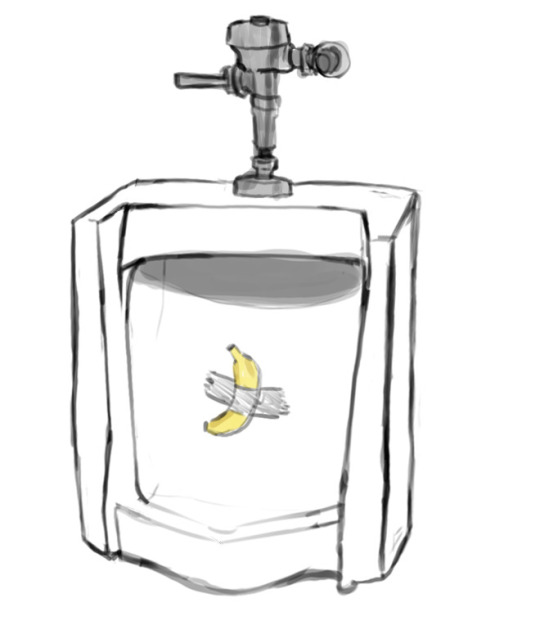



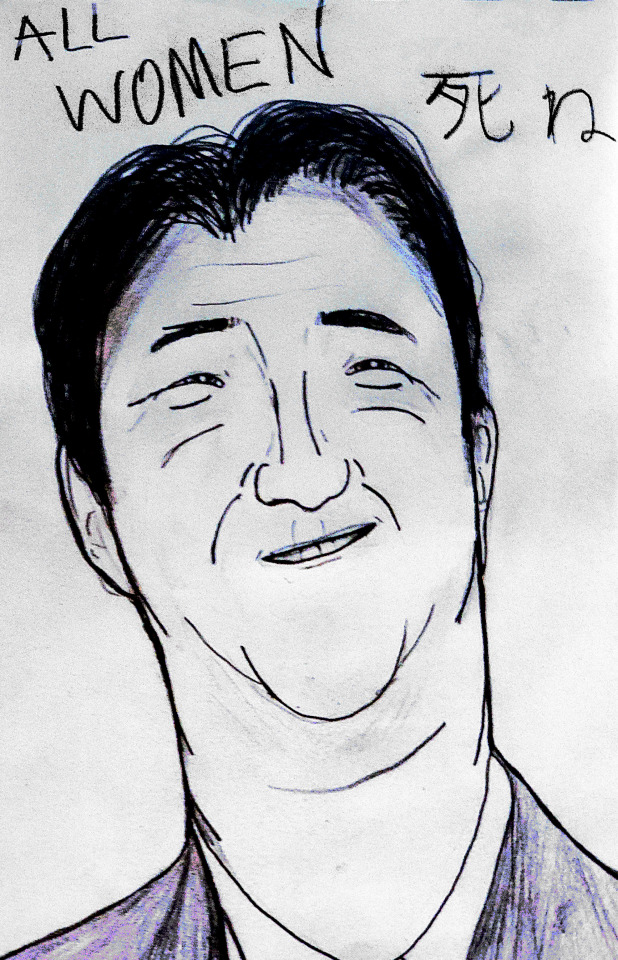

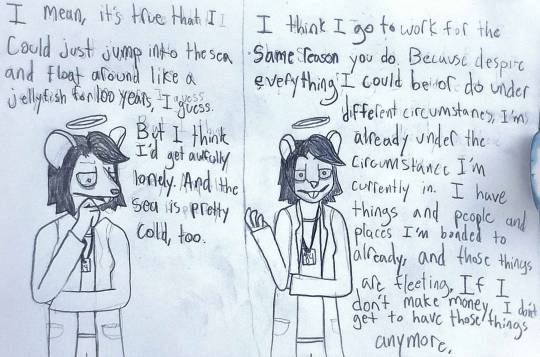
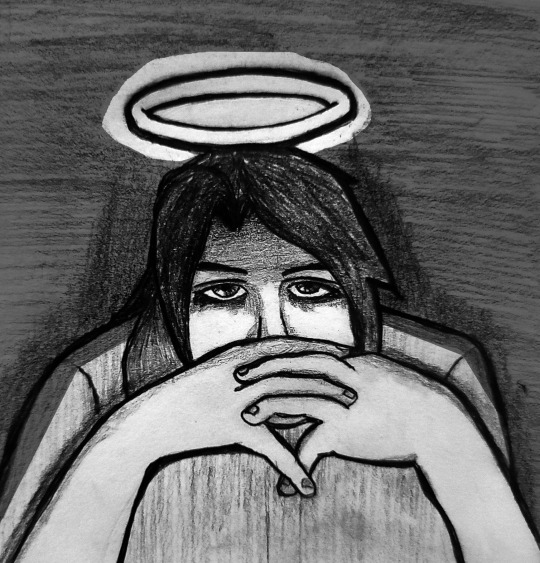
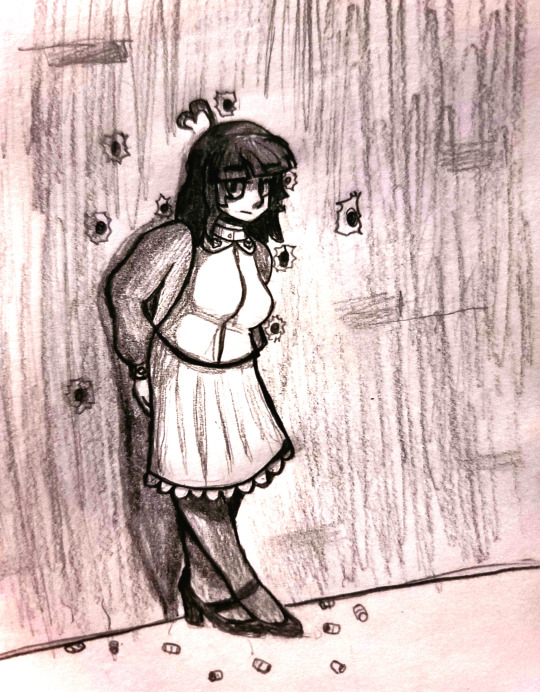
90 notes
·
View notes
Text
Writing Notes: Elements of Art
The elements of art are components or parts of a work of art that can be isolated and defined. They are the building blocks used to create a work of art.
LINE
A mark with greater length than width. Lines can be horizontal, vertical, or diagonal; straight or curved; thick or thin.
Horizontal lines suggest a feeling of rest or repose because objects parallel to the earth are at rest. In landscape paintings, horizontal lines help give a sense of space. The lines delineate sections of the landscape, which recede into space. They also imply continuation of the landscape beyond the picture plane to the left and right.
Vertical lines often communicate a sense of height because they are perpendicular to the earth, extending upwards toward the sky. In a church interior painting, vertical lines may suggest spirituality, rising beyond human reach toward the heavens.
Horizontal and vertical lines used in combination communicate stability and solidity. Rectilinear forms with 90-degree angles are structurally stable. This stability suggests permanence and reliability.
Diagonal lines convey a feeling of movement. Objects in a diagonal position are unstable. Because they are neither vertical nor horizontal, they are either about to fall or are already in motion. The angles of a ship and rocks on the shore convey a feeling of movement or speed in a stormy harbor scene.
The curve of a line can convey energy. Soft, shallow curves recall the curves of the human body and often have a pleasing, sensual quality and a softening effect on the composition. The edge of a pool in a photograph may gently lead the eye to the sculptures on the horizon.
SHAPE
A closed line. Shapes can be geometric, like squares and circles; or organic, like free-form or natural shapes. Shapes are flat and can express length and width.
FORM
A three-dimensional shape expressing length, width, and depth. It is the basis of sculpture, furniture, and decorative arts. Balls, cylinders, boxes, and pyramids are forms. They can be seen from more than one side.
Geometric shapes and forms include mathematical, named shapes such as squares, rectangles, circles, cubes, spheres, and cones. Geometric shapes and forms are often man-made. However, many natural forms also have geometric shapes. Example, a cabinet decorated with designs of geometric shapes.
Organic shapes and forms are typically irregular or asymmetrical. Organic shapes are often found in nature, but man-made shapes can also imitate organic forms. Example, a wreath uses organic forms to simulate leaves and berries.
SPACE
The area between and around objects. The space around objects is often called negative space; negative space has shape. Space can also refer to the feeling of depth.
Real space is three-dimensional; in visual art, when we create
the feeling or illusion of depth, we call it space.
COLOR
Light reflected off of objects. Color has 3 main characteristics:
Hue - the name of the color, such as red, green, blue, etc.
Value - how light or dark it is.
Intensity - how bright or dull it is.
White is pure light; black is the absence of light.
Primary colors are the only true colors (red, blue, and yellow). All other colors are mixes of primary colors.
Secondary colors are two primary colors mixed together (green, orange, violet).
Intermediate colors, sometimes called tertiary colors, are made by mixing a primary and secondary color together. Some examples of intermediate colors are yellow green, blue green, and blue violet.
Complementary colors are located directly across from each other on the color wheel (an arrangement of colors along a circular diagram to show how they are related to one another).
Complementary pairs contrast because they share no common colors. For example, red and green are complements, because green is made of blue and yellow.
When complementary colors are mixed together, they neutralize each other to make brown.
TEXTURE
The surface quality that can be seen and felt. Textures can be rough or smooth, soft or hard. Textures do not always feel the way they look; for example, a drawing of a porcupine may look prickly, but if you touch the drawing, the paper is still smooth.
Texture depicted in two-dimensions. Artists use color, line, and shading to imply textures. In a painting, a man's robe may be painted to simulate silk. The ability to convincingly portray fabric of different types was one of the marks of a great painter during the 17th century.
Surface texture. The surface of a writing desk is metallic and hard. The hard surface is functional for an object that would have been used for writing. The smooth surface of a writing desk reflects light, adding sparkle to the piece of furniture.
Principles of Design
#writing notes#art#writeblr#writing prompt#writers on tumblr#poets on tumblr#literature#spilled ink#poetry#writing advice#writing tips#writing reference#dark academia#studyblr#light academia#lit#words#art reference#art resources#writing resources
44 notes
·
View notes
Note
your drawing guides are SO helpful. Thanks for making them! I was wondering, how did you get to good at breaking down and figuring out what forms/shapes to use?
Thank you! I'm so glad they've been useful!
Well, something I've learned is that you can basically draw anything, and I mean anything, with just a handful of specific shapes, which are cylinders, spheres, squares, rectangles, and cones/triangles.
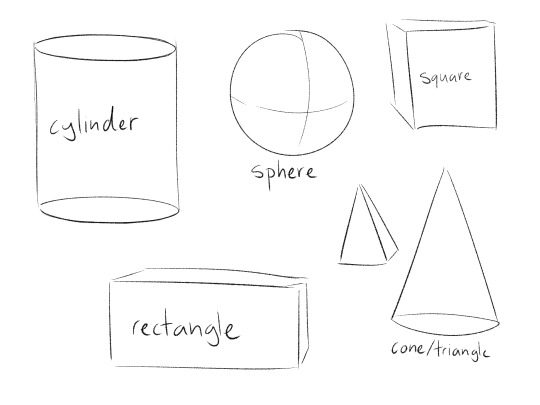
These are your building blocks to drawing anything and everything, it's just a matter of breaking whatever it is you want to draw down to these shapes.
For example, here's a picture of my doggo.
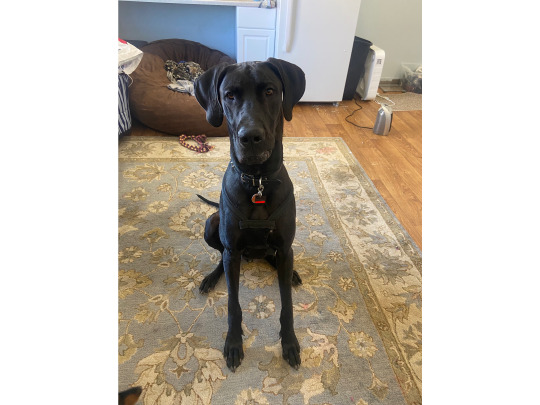
Let's break him down.
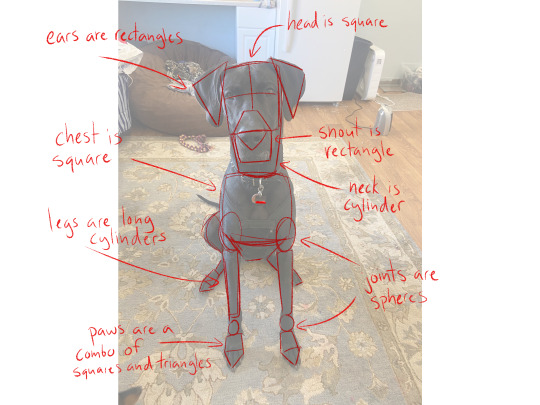
It's all about ignoring the details, colors, textures etc... and simplifying your subject into its most basic form. And once you do that, it's easier to sketch them out using these shapes as building blocks to construct them. Once you have the basic shape, pose, or expression sketched out, you carve away what you don't need and add detail, clothing, hair, facial expressions etc..
We'll use Lucifer as another example, as I can go back to his character sheet.

You can even break down their clothes if you want, like Lucifer's hat:

You give the shapes curves and depth to show direction and action, don't feel like you have to keep them frigidly in their pristine, straight-lined shapes. Be loose with it.
So far, with deconstructing Hazbin characters, I've found that most of their shapes are triangles and cylinders (of various sizes and widths). They also tend to be very curved and fluid, which is fun.
In the end it kind of just takes practice and training your brain to strip away all the fancy details, cut the character 's body into the basic sections we know of (face, neck, chest, torso, pelvis, arms, legs, feet), simplify those into their most bare-bones shapes, and pay attention to how those those shapes connect together.
Hope this helped, or shed some light on my process XD
#don't know if this helped#or if it just comes off as rambly#but yeah#its just about training your brain to look for these specific shapes and simplifying your subject with them#once your know the basic shapes of the character you can basically draw them doing whatever you want#and remember kids#when you're sketching#sketch light and loose#light loose and quickl#the slower more critical side of drawing comes after the rough sketch#the sketch is supposed to be rough#details take of#like#90% of the process#anywho#thanks for the ask#Im glad my drawing guides are helping#anon#anonymous#asks
72 notes
·
View notes
Text
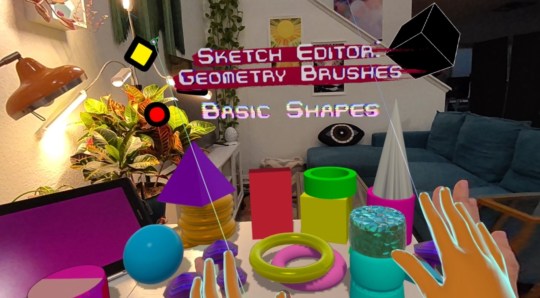

November 6 2023
Today's screenshots are: Man Experiencing Shape Mania
I've spent the last week or so working on a tutorial video explaining How To Make Shapes, which was a noble endeavor at first, but has quickly devolved into a feverish prism of my own design.
Cylinders litter my floor. Spheres will not stop rolling. Stacks of disks with incorrect collision modifiers explode at the slightest touch. Imperfect cones vibrate menacingly as soon as they are given physics. The pyramids and cuboids surely plot my demise.
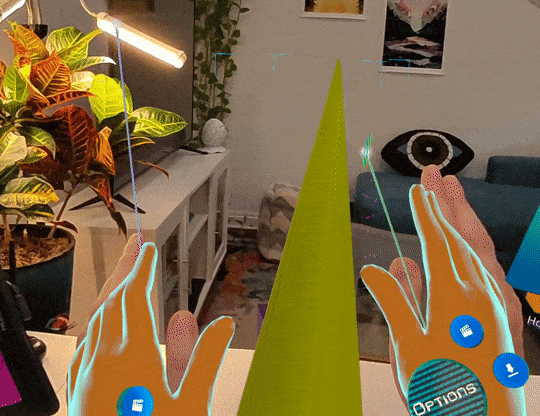
"Easy there, girl..."
If you do not hear from me after this next week, then I have surely fallen into their trapezoid. Do not seek me out, for I will be polygone!
#figmin xr#devlog#augmented reality#gamedev#game dev#dev log#in other words i had to re-record and re-edit all my footage today and if i see one more cube i'm gonna commit atrocities#VOICEOVER RECORDING TOMORROW THOUGH..... and then final edits#i hope 🤞🤞
92 notes
·
View notes
Text
It's so weird that most useful (to me) art advice sounds like most weird one, like, "if you're drawing something - pretend you're not drawing it"
Mountains? Nah, just rocks. Trees? Scene with weird goofy cylinders. Human? nooooo, nothing human in that pile of primitives
Everyone knows that you need to build things from cubes\spheres\cylinders\cones etc. but it's so weird you actually need to pretend it's only primitives and their modifications that happens to look like something you know but you need to ignore similarities
You're making emotional sketch with your oc or other character of choice, maybe while listening nice music that sets the mood, and then moment comes where you're like
Nice sketch! Alas we're not drawing it anymore. We're playing new game: place some * very much random * cubes on top
27 notes
·
View notes
Text
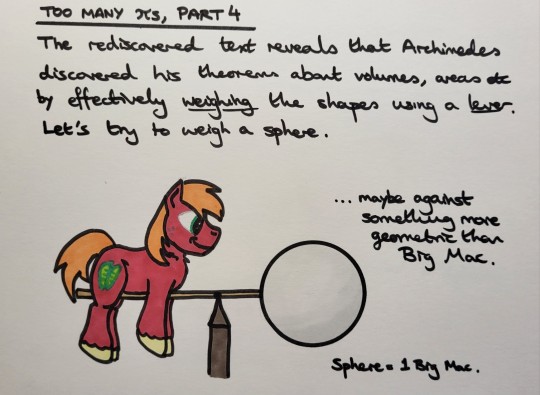
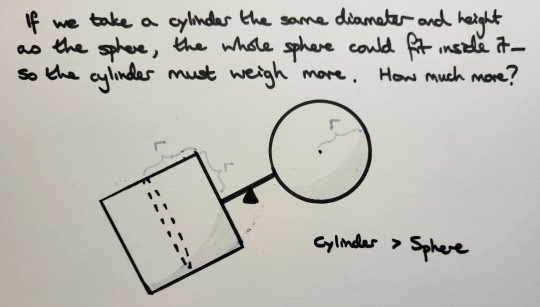
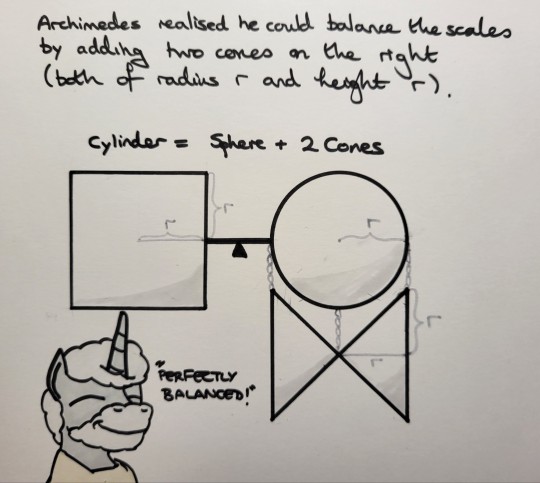

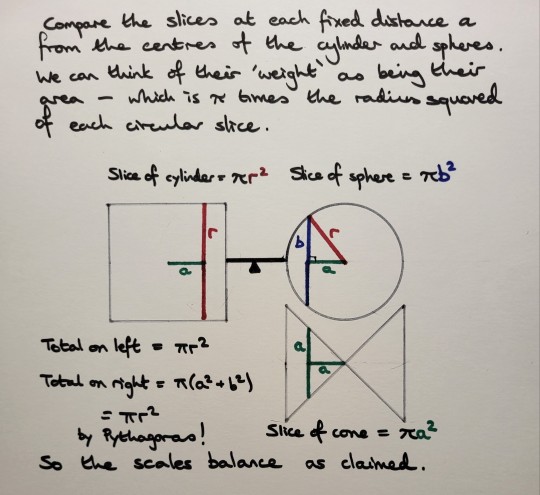
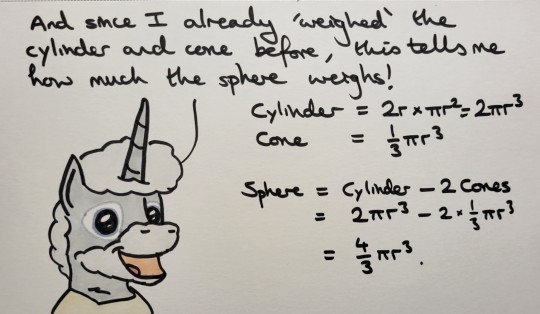
"Too many pis", Part 4 (of 4)
{Plain text:
The rediscovered text reveals that Archimedes discovered his theorems about volumes, area etc by effectively weighing the shapes using a lever. Let's try to weigh a sphere.
If we take a cylinder the same height and diameter as the sphere, the whole sphere could fit inside it, so the cylinder must weigh more. How much more? Archimedes realised he could balance the scales by adding two cones to the scales, both of height and radius r.
The best way to see why they balance is to slice all the shapes up into very thin slices. The cylinder, sphere and cones all have circular cross sections, so all the slices are circles.
Compare the slices at each fixed distance from the centres of the sphere and cylinder. We can think of their weight as being their area. By Pythagoras the slices of the cone and sphere exactly balance the slice of the cylinder. So the scales balance!
And since we already know the weight of the cylinder and cone, this tells us the weight of the sphere! }
53 notes
·
View notes
Text
10 notes
·
View notes
Text
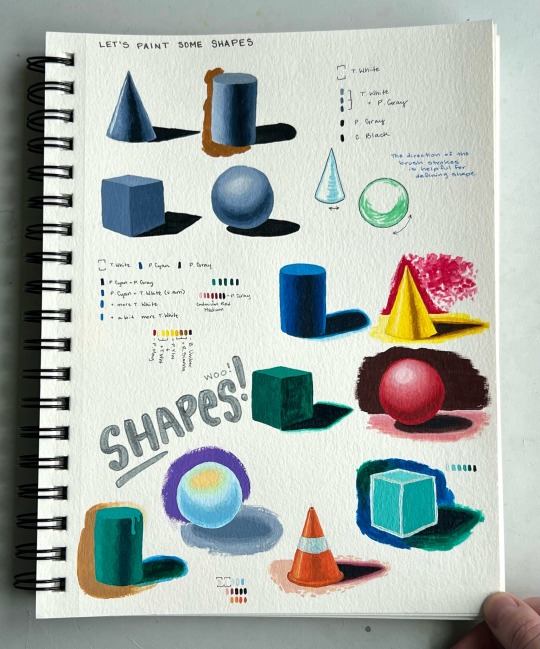
Finally got around to finishing this page in my acrylic sketchbook. I like to do these painting basics pages occasionally. This one is painting various shapes (cone, cylinder, box, sphere), starting with greyscale at the top and going down to more creative shapes.
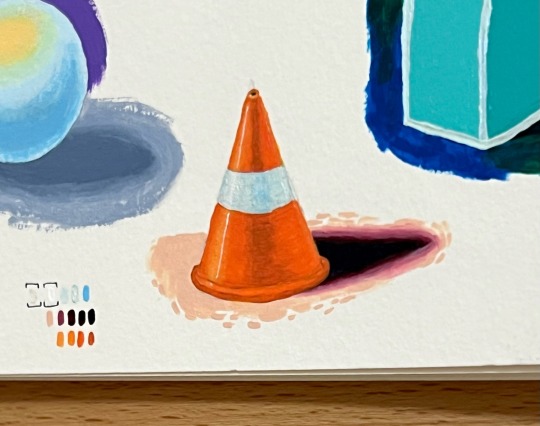
I really like how this little cone turned out. I painted it to be a safety pylon.
Acrylic on watercolour paper, I think this sketchbook is 7 inches by 10 inches?
#traditional art#art#painting#acrylic on paper#acrylic painting#painting basics#painting shapes#shapes#acrylic sketchbook#practice
7 notes
·
View notes
Photo
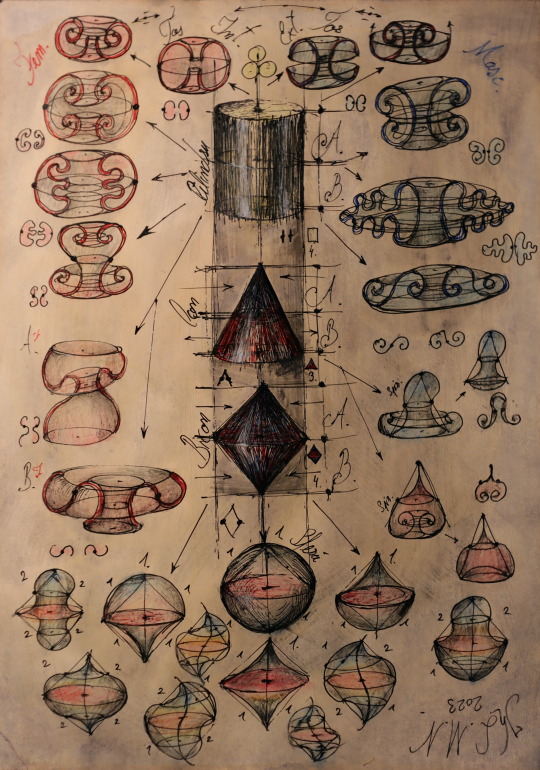
Cylinder cone sphere vortex
2 notes
·
View notes
Text

mort!! as i have said before, i don't play Hades, but my friends do, & i thought his design was cute & simple enough to attempt!
i didn't keep track as i worked so i can't give a pattern, but some notes on the general method below the cut
he's essentially all circles, which is why i tried him in particular. the body is magic ring at the bottom -> regular flat circle increases until wide enough -> work up a cylinder until about where the eyes go -> decrease to close in slightly staggered way (like, 18->15->12 instead of 18->12. but not necessarily those exact numbers).
nose is a small sphere that you leave open on one side to attach to the body (nose is stuffed).
tummy spot is a flat circle increased to the same size as the body at its widest, sewed on very tightly. the purple stitches are done after the fact, purely decorative.
the ears start as regularly increasing flat circles, but partway through switch to back & forth rows to leave a gap for where they fit against the head. also the last row or so is done without increasing, to give a little curve. sadly i cannot remember at all how i did the notch, i just messed around with type of stitch to change the height until it looked right (everything else is basically all single crochet).
the tail was a very narrow cone starting with mr at the tip and leaving an open end to sew to the body (tail is lightly stuffed).
arms, eyes, teeth and whiskers are embroidered (advise to do them before attaching the nose)
the feet were done in chains, a Y shape like a bird foot.
104 notes
·
View notes
Text
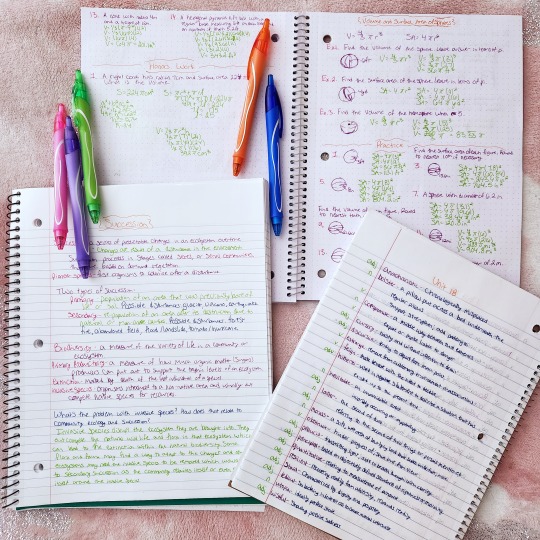
Monday, February 12, 2024
It was a rough start today. For some odd reason, I felt oddly fatigued. I thought I might be coming down with a cold, but alas, thankfully it was merely sleep disturbance. I remembered that I had woken up in the middle of the night from a not great dream, and it then makes sense to say that my morning fatigue was a result of this awakening.
Needless to say, I managed to get through the day, and by the time I went to the library to volunteer, I felt myself again.
Tasks Completed:
Geometry - Reviewed volumes of cylinders and cones + learned to find surface area and volume of spheres + read about how the formulas were derived + practice + honors work
Lit and Comp II - Copied Unit 18 vocabulary + read chapter 16 of Emma by Jane Austen + sent my short story to friend for peer review and peer reviewed hers + edited story + sent story to mom for final grade (50/50 or 49.5/50 avg) + read over next writing assignment and the grading rubric
Spanish 2 - Listened to a story in Spanish + reviewed vocabulary
Bible I - Read Joshua 3-4
World History - I was supposed to do some practice quizzes but the website they were hosted on was not working, no grade attached to these quizzes at least, so I did not have any World History today
Biology with Lab - Watched lecture video on ecological succession + read about succession + watched a presentation on succession after a fire + watched another video of an example of succession + learned about invasive species + answered study question + continued working on my endangered animal project (saola)
Foundations - Read more on persuasiveness + completed Lumosity daily brain workout + learned about logical fallacies + read examples of bandwagon, strawman, and fallacy fallacies
Khan Academy - Completed High School Geometry Unit 9: Lesson 3 parts 4
CLEP - None today
Duolingo - Completed at least one lesson each in Spanish, French, and Chinese
Reading - Read pages 201-232 of Warrior Girl Unearthed by Angeline Boulley
Chores - Cleaned my bathroom + cleaned windows in my bedroom and in the study + took the trash and recycling out
Activities of the Day:
Volunteered for two hours at the library
Ballet
Contemporary
Journal/Mindfulness
-
What I’m Grateful for Today:
I am grateful for getting through the day.
Quote of the Day:
Youth is happy because it has the capacity to see beauty. Anyone who keeps the ability to see beauty never grows old.
-Franz Kafka
🎧Nocturne in C sharp minor, Op. 27 No. 1 - Frédéric Chopin
#study community#study blog#study inspiration#study motivation#studyblr#studyblr community#study-with-aura
8 notes
·
View notes
Text
The social hierarchies of Spaceland
So in the original ‘Flatland’ story the social hierarchy is very linear and straightforward. Isosceles triangles are the lowest class, but those with wider angles are viewed more favourably to those with narrow angles. From equilateral triangles onwards, the more sides to the polygon the higher the class, with circles being at the top of the order. Women, all being ‘lines’, are considered inherently of a lower class than polygonal men. Any ‘irregular’ shape is either reconfigured into regularity in infancy (a process that can often kill the infant), killed, or kept hidden from society for their entire life.
However, in my interpretation of Flatland, this specific strict social order is true in some but not all nations of Flatland. Other nations are more lenient, having a wider threshold of what they consider to be ‘regular’ and thus allowed to exist in society. These semi-uniform polygons and other shapes do not exactly fit within the hierarchy of uniform polygons, but rather in their own parallel hierarchy. I have written more about these Flatlanders in a couple of earlier posts. [1] [2]
In three-dimensional Spaceland, things get even more complex.
A three dimensional shape is made up of multiple two-dimensional shapes as its surface, for example the cube, being made up of six squares. The thing with three dimensional shapes is that there are a LOT of them, with several different ways to class or divide them. For example one could distinguish based on ‘type’, for example prisms being separate from pyramids, from Archimedean solids, from platonic solids, from bipyramids, Johnson solids, zonohedra, etc... But even then there are some overlap between these groups, with the tetrahedron being both a platonic solid and a pyramid, a cube being a platonic solid and a prism, and the icosahedron being both a platonic solid and a gyroelongated bipyramid.
The type of division described above is the most common in Spaceland, though the exact social order can vary between regions. Generally, platonic solids are highly regarded, followed by Archimedean solids, while prisms and pyramids are held in low regard. ‘less common’ solids, such as Johnson solids, frustums, or bipyramids, are typically held in the same or lower regard as pyramids and prisms. Frustums and certain Johnson solids particularly have been considered irregular in some regions throughout history.
Within particular groups of polyhedra lies a secondary, more linear, hierarchy. Where applicable, a higher number of sides is held in higher regard. Within pyramids and and prisms, cones and cylinders tend to have more privileges than those of of a lower face count. A complication comes about, however, with the overlap with platonic solids. The tetrahedron, though being of the lowest possible face count for a pyramid, gets a social advantage over some other pyramids of a low face count due to being a platonic solid, provided all their faces are equilateral triangles. Likewise, the cube is only one rank higher than the triangular pyramid, yet also has the advantage of being a platonic solid. This gets particularly interesting in the case of cubes and rectangular prisms, who both share the same number of edges and vertices, and the same angles. Yet due to their equal length edges, cubes fall into category of platonic solids. This exact dynamic played a notable role in the differences between how Barnaby and his older brother Box were treated growing up.
Zonohedra are a strange case, because their high face count and visual similarity to spheres should rank them higher in the social hierarchy, however their faces are made of of skewed, elongated or irregular polygons. This lands them in different amounts of privilege depending who you ask. Some consider them sphere-adjacent, while others consider them untrustworthy and irregular-adjacent.
Unsurprisingly, the most privileged shape of them all is the sphere. The face, edge, and vertex count of the sphere are incalculable, and they have held great power throughout history. With this great power and privilege, however, has come a whole lot of destruction and oppression of other human beings. That is of course, not to say that every sphere in the modern day behaves this way or finds their place at the top of the social hierarchy to be fair.
The socio-political state of Spaceland is pretty much analogous to that of real-life Earth. In 2050, the social hierarchy of three dimensional shapes does not play nearly as much of a role in how humans are allowed to live their lives in many regions, though of course shape-based discrimination and biases absolutely still exist. Even back in 2000, the year of the third contact with Flatland, Spaceland found itself to be much more societally progressive than its two-dimensional counterpart.
27 notes
·
View notes
